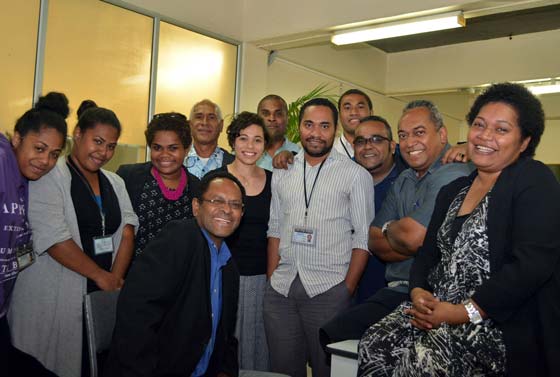TJ Aumua
OPINION: I felt the heat of Fiji’s tropical climate as soon as I jumped off the plane. The warmth was a pleasant relief from New Zealand’s frosty winter and a gratifying reminder of what a holiday feels like.
But I wasn’t here for a holiday. So ignoring the billboards touting Fiji as a honeymoon getaway, I was to work in the nation’s newsrooms for two weeks to gain a different perspective on our Pacific neighbour.
The exchange was a part of Pacific Cooperation Foundation’s Media Programme which partnered with Fiji National University and Auckland University of Technology’s Pacific Media Centre as host organisations.
On my first day in Suva I met with student journalists from Fiji’s National University. They told me Fiji should be known for its people; that despite the nation experiencing four coups in the past two decades, the people have persevered and continue to make achievements.
I was lucky enough to meet some of these people. For two weeks it was an inspiration to work alongside some of Fiji’s 20-plus-year-old journalists who were informing the nation.
I got to accompany them on their weekly assignments helping with interviews, writing and voicing news stories, and watching behind the scenes of how a 6pm news bulletin is put together and broadcast live to the nation.
A highlight was being a part of a newsroom’s daily process of being placed on an assignment early in the morning, putting the story together and then watching it on TV that night or reading it in the newspapers the next day.
Restrictions
Fiji’s media climate often hits international headlines for being restricted and censored by the Fiji Media Industry Development Decree.
At times, this was frustrating to work under; having to withhold certain questions I wanted answered, as well as locals being extremely hesitant to speak to the media in fear of repercussions.
But I admired those journalists whom, under challenging circumstances, strived to keep the people of Fiji at the heart of their stories.
When I asked some of Fiji’s student journalists why they chose this career path, they said although they had felt the effects of their country’s media environment, it was important for them to be a voice for Fiji’s rural communities who are often under represented.
I learnt that even with the huge political shifts within their island nation, and regardless of how young they might be, these journalists were determined to be a part of the growth of Fiji, and so kept informed of their government’s politics and direction.
The motivated people I met in Fiji went beyond these young journalists. It extended further into youth who worked within the countries NGOs, engineering firms, the music scene and those who are entrepreneurs.
Even though my stay in Fiji was brief, I feel honoured to have been able to experience and be a part of the new media generation.




